Chordata

Evening Grosbeak
Coccothraustes vespertinus

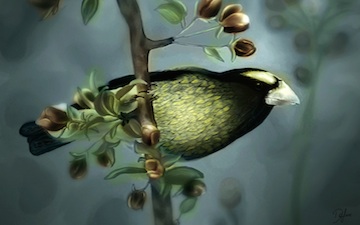

2 POINTS
Play: Coccothraustes vespertinus has a FLIGHT of 2
Fact: The Evening Grosbeak is one of North America’s larger finches
Cool, Warm
Graphic by Dafne-1337artwww.dafneart.com/
Photo by Peter Wallacken.wikipedia.org/wiki/File:Evening_Grosbeak_Male.jpg
The Evening Grosbeak (Coccothraustes vespertinus) is a large finch. In the past, it was treated in a genus of its own as Hesperiphona vespertina, but is now usually placed in the same genus as the Hawfinch of Eurasia. The breeding habitat is coniferous and mixed forest across Canada and the western mountainous areas of the United States and Mexico. It is an extremely rare […] read more

Blue Jay
Cyanocitta cristata

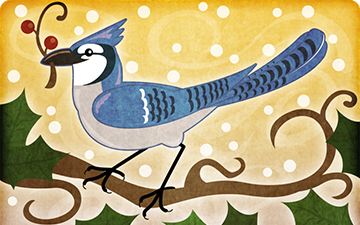

2 POINTS
Play: Cyanocitta cristata has a FLIGHT of 2
Fact: Blue Jays are highly curious and are considered intelligent birds
Cool, Warm
Graphic by Jessica Dixonwww.etsy.com/shop/Corvid337
The Blue Jay (Cyanocitta cristata) is a passerine bird in the family Corvidae, native to North America. It is resident through most of eastern and central United States and southern Canada, although western populations may be migratory. It breeds in bothdeciduous and coniferous forests, and is common near and in residential areas. It is predominately blue with a white chest […] read more

Ruby-Throated Hummingbird
Archilochus colubris

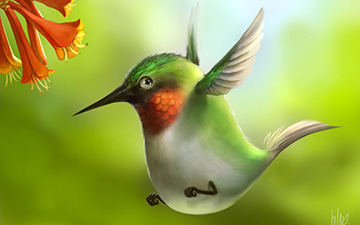

4 POINTS
Play: Archilochus colubris has a FLIGHT of 2.
Fact: the ruby-throated hummingbird can beat its wings 55 times per second.
Cool, Warm
Graphic by Silverfox5213poke-a-doodle-doo.tumblr.com/
Photo by Joe Schneiden.wikipedia.org/wiki/File:Archilochus_colubris_(Male).jpg
The Ruby-Throated Hummingbird (Archilochus colubris) is a small hummingbird. It is the only species of hummingbird that regularly nests east of the Mississippi River in North America. The RubyThroated Hummingbird is 7–9 cm (2.8–3.5 in) long and has a 8–11 cm (3.1–4.3 in) wingspan. Weight can range from 2 to 6 g (0.071 to 0.21 oz), with males averaging 3.4 g (0.12 oz) against the […] read more

Moose
Alces alces

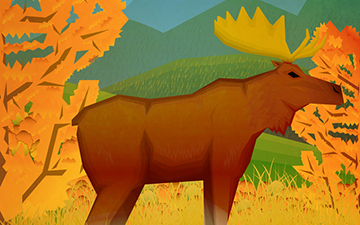

5 POINTS
Play: Alces alces has a MOVE of 2.
Fact: In Europe, a moose is known as a European Elk.
Cold, Cool
Graphic by Ilya Meshkovskiywww.behance.net/IlyaMeshkovskiy
Photo by USDA Forest Serviceen.wikipedia.org/wiki/File:Moose_superior.jpg
The moose (North America) or Eurasian elk (Europe) (Alces alces) is the largest extant speciesin the deer family. Moose are distinguished by the palmate antlers of the males; other members of the family have antlers with a dendritic (“twig-like”) configuration. Moose typically inhabitboreal and mixed deciduous forests of the Northern Hemisphere in temperate to subarcticclimates. Moose used to have a much wider range but hunting […] read more

Zebra Finch
Taeniopygia guttata

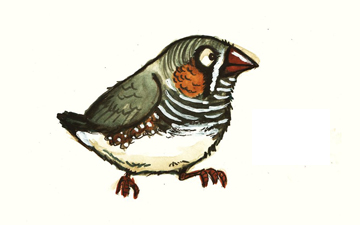

3 POINTS
Play: Taeniopygia guttata has a FLIGHT of 2
Fact: Taeniopygia guttata are loud and boisterous singers.
Cool, Warm
Graphic by Sonya Hallettbonzaialsatian.deviantart.com/
The Zebra Finch, Taeniopygia guttata (formerly Poephila guttata),[2] is the most common and familiarestrildid finch of Central Australia and ranges over most of the continent, avoiding only the cool moist south and the tropical far north. It also can be found natively in Indonesia and East Timor. The bird has been introduced to Puerto Rico, Portugal, Brazil and the United States. The ground-dwelling Zebra Finch […] read more

Japanese Flying Squirrel
Pteromys momonga


Sorry, there is no photo available. If you have one, please submit
here
.
4 POINTS
Play: Pteromys momonga has a MOVE of 2
Fact: Pteromys momonga blend so well with the coloration of the tree bark that they practically become invisible.
Cool, Warm
Graphic by Wison Hendrikcicakkia.deviantart.com/
The Japanese dwarf flying squirrel (Pteromys momonga; Japanese: ニホンモモンガ;Hepburn: Nihon momonga) is a type of flying squirrel. Its body is 14–20 cm long and the tail length is 10–14 cm. It weighs 150–220 g. It is much smaller than the Japanese giant flying squirrel which can reach 1500 g. Its back is covered with grey brown hair, and its belly […] read more